Great Frigatebird:[Fregata minor] Look of Nature’s Aviator
Scientific Classification
| Kingdom | Phylum | Subphylum | Class | Infraclass | Order | Superorder | Subclass | Family | Genus | Species |
|---|---|---|---|---|---|---|---|---|---|---|
| Animalia | Chordata | Vertebrata | Aves | Neognathae | Suliformes | Neoaves | Neornithes | Fregatidae | Fregata | F. minor |
Great Frigatebird
A big seabird in the frigatebird family is the Great Frigatebird (Fregata minor). Across the tropical Pacific Ocean, including places like Hawaii and the Galápagos Islands, are notable nesting populations. In the Indian Ocean, colonies are thriving in Mauritius and the Seychelles, notably on the islands of Aride and
Aldabra. Furthermore, a little community lives in the South Atlantic, mostly in the vicinity of Boatswain Bird Island (Ascension Island) and St. Helena.The Fregata minor is a large, gracefully built seabird with plumage that is primarily black. It can grow up to 105 cm in length. This species
exhibits sexual dimorphism; the female is larger than the mature male and has a white breast and throat. In contrast, the male has characteristic purple-green shine on his scapular feathers. The male has the ability to expand its amazing crimson gular sac during the breeding season. The Great Frigatebird is
well-known for its feeding habits; it frequently targets flying fish from the ocean’s surface, catching them in midair. Although they are not as kleptoparasitic as other frigatebirds, they mostly feed in pelagic regions within 80 km (50 mi) of their roosting grounds or breeding colony.
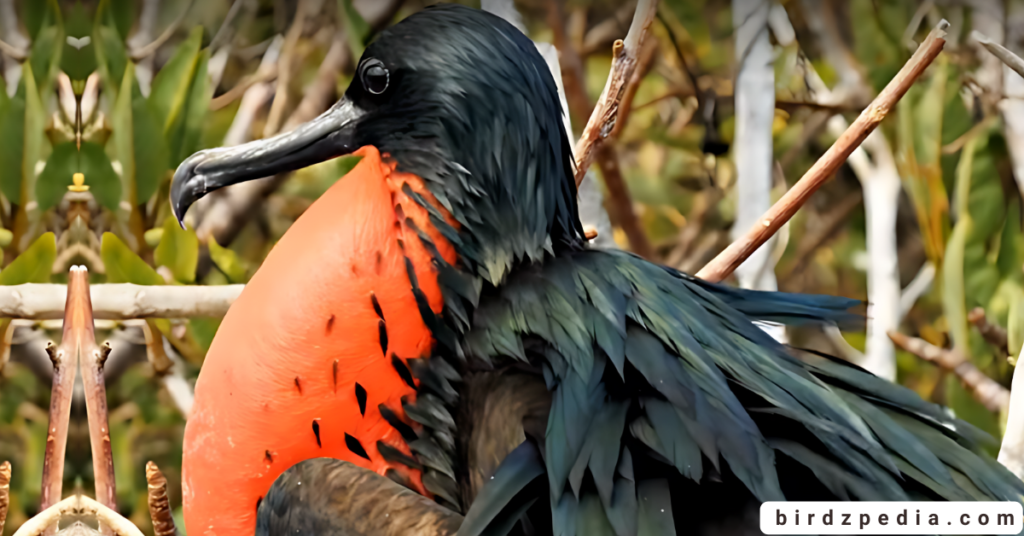
Summary
- Description:
- Large seabird with a wingspan of up to 105 cm.
- Predominantly black plumage.
- Sexual Dimorphism:
- Exhibits sexual dimorphism.
- Females are larger than adult males.
- Female has a white throat and breast.
- Male’s scapular feathers display a purple-green sheen.
- Breeding Season:
- Male can distend a striking red gular sac during the breeding season.
- Feeding Habits:
- Feeds on fish captured in flight, especially flying fish, from the ocean’s surface.
- Engages in kleptoparasitism less frequently than other frigatebirds.
- Habitat and Distribution:
- Major nesting populations in the tropical Pacific Ocean, including Hawaii and the Galápagos Islands.
- Colonies in the Indian Ocean, particularly in the Seychelles and Mauritius.
- Small population in the South Atlantic around St. Helena and Boatswain Bird Island (Ascension Island).
- Pelagic Feeding Areas:
- Feeds in pelagic waters within 80 km (50 mi) of breeding colonies or roosting areas.
- Nesting Rituals:
- Forms monogamous, mated pairs yearly.
- Males display in tight groups on shrubs or trees, often in close proximity.
- Colonial Nesting:
- Nesting colonies are established in specific locations, often on remote tropical and subtropical islands.
- Nesting sites can include mangroves, bushes, and occasionally bare ground.
- Cultural Significance:
- In some cultures, the bird holds symbolic significance, and its features may be integrated into folklore or traditions.
- Traditional Naming:
- Known by various names in different cultures; for example, the Hawaiian name for the species is “‘Iwa,” which also means “thief.“
- Human Interaction:
- Historically, the Great Frigatebird may have influenced local beliefs or practices due to its distinctive appearance and behaviors.
Taxonomy
They was first formally described in 1789 by German naturalist Johann Friedrich Gmelin, who included information on it in his updated version of Carl Linnaeus’ Systema Naturae. Gmelin gave it the binomial name Pelecanus minor when it was first assigned to the genus Pelecanus.
This classification was informed by John Latham’s 1785 account of the “lesser frigate pelican” and George Edwards’s 1760 picture of the “man of war bird.” Currently, there are five closely related species in the Fregata genus and Fregatidae family, which includes them.
The Christmas Island frigatebird, or Fregata andrewsi, is its closest relative. Taxonomic regulations have kept the species name “minor,” which means “smaller” in Latin, despite its common name. This historical record sheds light on the taxonomic journey of the bird and its relationships with other frigatebirds.
In addition, fossilized wing phalanx and humerus from Ulupau Head on Oahu, which date to the Late Pleistocene, were found to resemble the present Fregata minor.
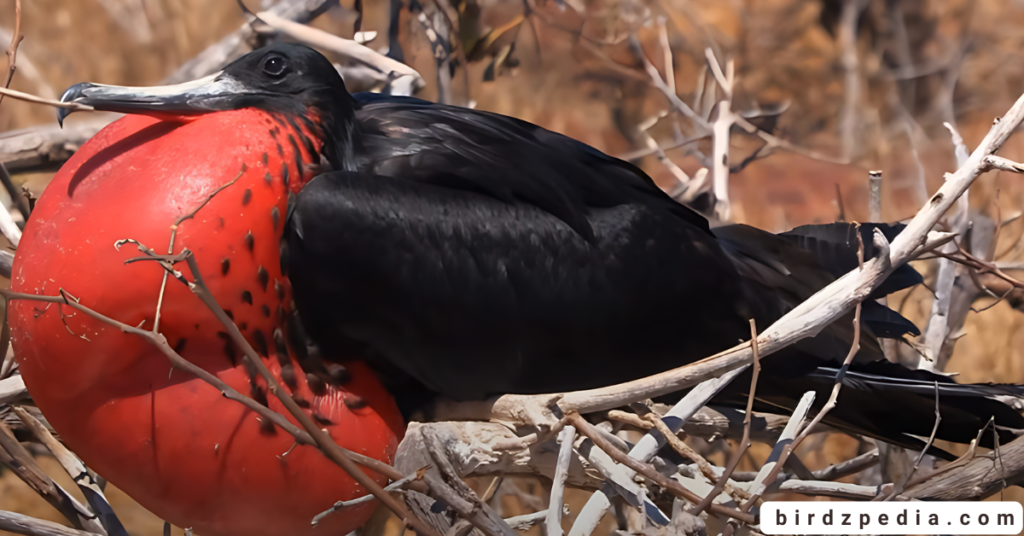
Subspecies
| Subspecies | Scientific Name | Distribution |
|---|---|---|
| F. m. aldabrensis | Mathews, 1914 | (Aldabra, Comoros, Europa Island)West Indian Ocean |
| F. m. minor | (J. F. Gmelin, 1789) | Central and East Indian Ocean to South China Sea |
| F. m. palmerstoni | (J. F. Gmelin, 1789) | The West and Central Pacific Ocean comprises the following islands: Kiritimati (Christmas Island), Marquesas Islands, Tuamotus, Society Islands, Pitcairn Islands, Marshall Islands, Hawaiian Islands, Phoenix Islands, Caroline Island, and Isla Salas y Gómez. |
| F. m. ridgwayi | Mathews, 1914 | (Revillagigedo Islands, Cocos Island, Galápagos Islands) East Pacific Ocean |
| F. m. nicolli | Mathews, 1914 | Martim Vaz and Trindade, South Atlantic |
Description
They have a remarkable wingspan of 205–230 cm (81–91 in), and its length ranges from 85 to 105 cm (33 to 41 in). Male persons are often smaller than female individuals in many geographical places. The larger females weigh between 1,215 and 1,590 g (2.679–3.505 lb),
while the boys normally weigh between 1,000 and 1,450 g (2.20–3.20 lb).The distinctive features of frigatebirds are their long, pointed wings and dramatically split tail. They feature the biggest wing area to body mass ratio and the lowest wing loading among all birds.
It is believed that this special characteristic helps them make use of marine thermals, which are created by minute temperature differences between tropical air and sea. The black plumage of male frigatebirds is complemented by green-hued scapular feathers that shimmer in the sunlight.
Females, on the other hand, are black in color and have white breasts and throats, along with a characteristic red ring around their eyes. Juveniles have a black look with a rust-colored throat, white face, and head.

Distribution and Habitat
Globally, they are widely distributed in tropical waters. Hawaii is the northernmost range in the Pacific, with around 10,000 nesting pairs, mostly in the Northwestern Hawaiian Islands. There are colonies all across the Central and South Pacific, from Wake Island to the Galápagos to New Caledonia,
and there are even sporadic reports of nesting on Australian territory in the Coral Sea. Moreover, colonies are located on islands in the Indian Ocean, such as Christmas Island, the Maldives, and Mauritius, as well as the Seychelles islands of Aldabra and Aride.
In contrast, the population in the Atlantic is quite small and limited to Ascension Island, St. Helena, and the Brazilian islands of Martin Vaz and Trindade. They migrate in a methodical manner throughout their vast habitat. These migrations consist of regular flights and sporadic long-distance
flights. A number of individuals bearing wing tags on Tern Island in the French Frigate Shoals showed consistent 873-kilometer journeys to Johnston Atoll, with one individual even going as far as Quezon City in the Philippines. A male Fregata minor made a noteworthy 4400 km flight over four months
from Europa Island in the Mozambique Channel to the Maldives, where he took advantage of rich fishing grounds. What’s interesting is that these birds are philopatrous, meaning that even after they have ventured to different nesting places, they still tend to breed in their natal colony.
Species in same Genus
| Genus | Species |
|---|---|
| Fregata | Great Frigatebird (F. minor) |
| Fregata | Ascension Frigatebird (F. aquila) |
| Fregata | Christmas Island Frigatebird (F. andrewsi) |
| Fregata | Magnificent Frigatebird (F. magnificens) |
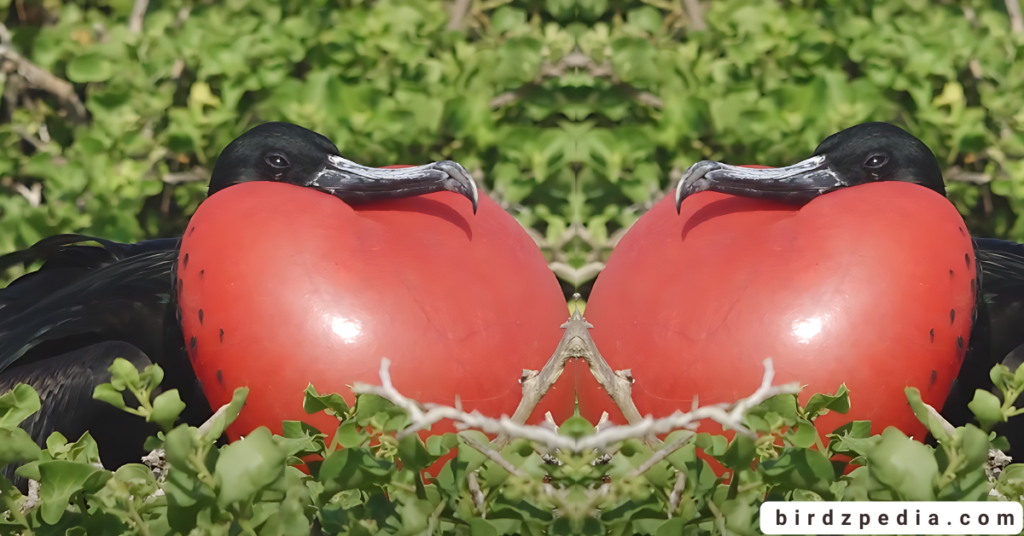
Behaviour
Feeding
Within 80 kilometers (50 miles) of the breeding colony or roosting locations, they forages in pelagic waters. The most frequent food source for the Fregata minor is flying fish, specifically those in the Exocoetidae family; it can also consume squid and other fish species.
In the case of flying fish flushed from the water, prey is seized while in flight, either from just below the surface or from the air. Fregata minor will feed on pods of dolphins that drive schooling fish to the surface or schools of predatory tuna.
They won’t land on the water’s surface, like all other frigatebirds, and if they do, they usually can’t take off. They are frequently observed grazing in expansive, mixed-species
- They hunt seabird chicks at breeding colonies, targeting species such as sooty terns, spectacled terns, brown noddies, black noddies, and even other great frigatebirds.
- Studies reveal that only females (both adults and juveniles) engage in this hunting behavior, with a few individuals responsible for the majority of kills.
- In coastal areas, Fregata minor opportunistically feed on turtle hatchlings and fish scraps from commercial fishing operations.
- They attempt kleptoparasitism, chasing nesting seabirds like boobies, tropicbirds, and gadfly petrels, aiming to make them regurgitate their food
- Kleptoparasitism is considered a supplemental feeding strategy, not a significant part of the species’ diet. A study on frigatebirds stealing from masked boobies estimated they could obtain at most 40% of needed food, averaging only 5%.
Breeding
| Aspect | Details |
|---|---|
| Breeding Behavior | Seasonally monogamous; breeding season lasts up to two years from mating to the end of parental care. |
| Nesting | Colonial nesting in bushes, trees, or on the ground in the absence of vegetation; colonies of several thousand pairs. Nesting bushes often shared with red-footed boobies and other frigatebirds. |
| Courtship and Display | Both sexes have a gular sac; in males, it’s red and inflatable for attracting mates. Courtship involves males inflating sacs, wagging heads, shaking wings, and calling. Females observe multiple male groups before forming pair bonds. |
| Pair Bond Formation and Nest Building | Varies from a couple of days to a few weeks. Males collect nesting material (twigs, vines, flotsam), and females build nests. Nesting material may be stolen from other seabird species. Nests are large platforms of twigs encrusted with guano; little maintenance during the breeding season. |
| Egg Laying | Single chalky-white egg (68 mm × 48 mm) laid each breeding season. If the egg is lost, the pair bond breaks; females may acquire a new mate and lay again in the same year. |
| Incubation | Both parents incubate the egg in shifts lasting 3–6 days; incubation lasts around 55 days. Incubation is energetically demanding, with birds losing 20–33% of body mass during a shift. |
| Chick Development | Chicks start calling before hatching, are altricial, lie prone for several days after hatching, and are brooded for two weeks. Covered in white down, guarded by a parent for another fortnight. Given numerous meals a day initially, transitioning to every one to two days. Feeding is by regurgitation. |
| Post-Fledging Parental Care | Fledging occurs after four to six months; chicks continue to receive parental care for 150 to 428 days, the longest among birds. The duration depends on oceanic conditions. Diet provided partly by parents and partly self-obtained. Play is observed, enhancing aerial skills. |
| Sexual Maturity and Lifespan | Reach sexual maturity after many years; females attain full adult plumage at 8–9 years, males at 10–11 years. Average lifespan is unknown but assumed to be relatively long. Study on Tern Island found ringed birds up to at least 44 years old. |

Voice
They are renowned for its quiet behavior when at sea. Nonetheless, they can make a variety of vocalizations throughout the breeding season, particularly when they are at or close to their nesting colonies.
- Guttural Calls:As a part of their courtship display, males may make throaty or guttural cries. These cries are commonly associated with the expansion of their bright red gular sacs during the breeding season.
- Wing Whistles: Apart from using their voices, they can also make noises using their wings. Wing whistles are a noise that they may make as part of their courtship display..
- Bill Clattering: There are frigatebird species that clatter their bills, one of which being the Fregata minor. This is another aspect of their courting activity; it entails their bills tapping or clattering quickly.
Speed
Although their exact speed is unknown, these birds are renowned for their extraordinary flying prowess. When they are foraging over vast oceans, they may travel great distances quickly by using their pointed wings and forked tails to help them soar efficiently.
They demonstrate their ability to be among the most proficient long-distance seabird fliers by varying their flying speed based on wind speed and the objective of the voyage.
Lifespan
Although the exact longevity of their is unknown, it is thought that they live quite long lives. Ten of the 35 ringed Fregata minor who were recaptured as part of a 2002 research on Hawaii’s Tern Island were discovered to be 37 years of age or older.
At least 44 was the age of one of them. This shows that they are long-lived birds, with a lifespan of several decades. The average longevity is not exactly determined, though.
Status
The International Union for Conservation of Nature (IUCN) presently lists they are a species of Least Concern due to its wide range and substantial total population.
Their subspecies F. m. nicolli, which formerly bred on Trindade as well as Saint Helena, has encountered difficulties in the South Atlantic. The only evidence of the Saint Helena population’s disappearance across time comes from subfossil remnants that date barely a few hundred years back.
The bird has vanished from the main island as a breeding species because of habitat loss and overgrazing by invasive goats on Trindade, a Brazilian military reserve with restricted access. There have been conservation initiatives put into action, such as invasive species eradication campaigns.
The subspecies F. m. nicolli is regarded as highly endangered in Brazil, its only remaining habitat, despite these efforts.
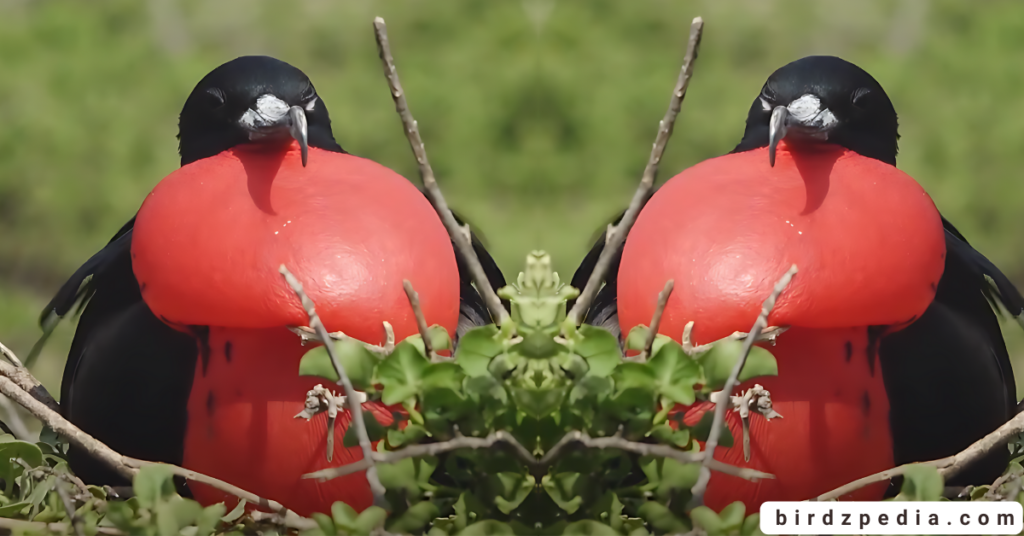
Threats
- Habitat Disturbance:
- Human activities can disrupt Fregata minor breeding areas, such as coastal development and tourism.
- Disturbances may result in nesting locations being abandoned or in chicks and eggs being more vulnerable.
- .
- Invasive Species:
- Threats arise when invasive species are introduced into reproductive colonies.
- The reproductive success of Fregata minor can be negatively impacted by invasive predators like rats and cats that feed on the eggs, chicks, or even adult birds.
- Climate Change:
- Sea level rise and alterations in climatic patterns may have an impact on the availability of good nesting locations.
- Changes in oceanographic conditions could have an effect on food supply, which would damage fledglings’ and adults’ ability to feed.
- Marine Pollution:
- Marine debris can entangle or be consumed by Great Frigatebirds, making plastic pollution in the oceans a hazard.
- Plastic consumption can cause health problems and decrease the effectiveness of foraging.
- Overfishing:
- The availability of prey species can be impacted by overfishing and the depletion of marine resources, which can limit their capacity to successfully forage.
- A shift in the distribution and amount of fish may put the birds under nutritional stress.
- Human Disturbance:
- Feeding behaviors can be disturbed by human interference during foraging activities.
- Fishing and boating near foraging grounds might cause competition for resources or force animals to move away from their preferred feeding locations.
- Oil Spills:
- They are seriously threatened by oil spills in maritime areas.
- The waterproofing and insulation provided by contaminated feathers can be compromised, resulting in decreased buoyancy and challenging foraging for the birds.
- Global Fisheries:
- Unintentional bycatch of Fregata minor might occur as a result of interactions with international fisheries, such as longline fishing.
- Injury or death may result from ingesting baited hooks or becoming entangled in fishing gear.
Common Names in Different Languages
| Language | Common Name |
|---|---|
| English | Great Frigatebird |
| Spanish | Rabihorcado Magnífico |
| French | Frégate superbe |
| German | Prachtfregattvogel |
| Italian | Fregata magnifica |
| Portuguese | Tesourão-grande-do-pacífico |
| Dutch | Grote Fregatvogel |
| Russian | Великий фрегат (Velikiy fregat) |
| Japanese | フリゲートアホウドリ (Furigēto ahōdori) |
| Chinese (Simplified) | 大军舰鸟 (Dà jūnjiàn niǎo) |
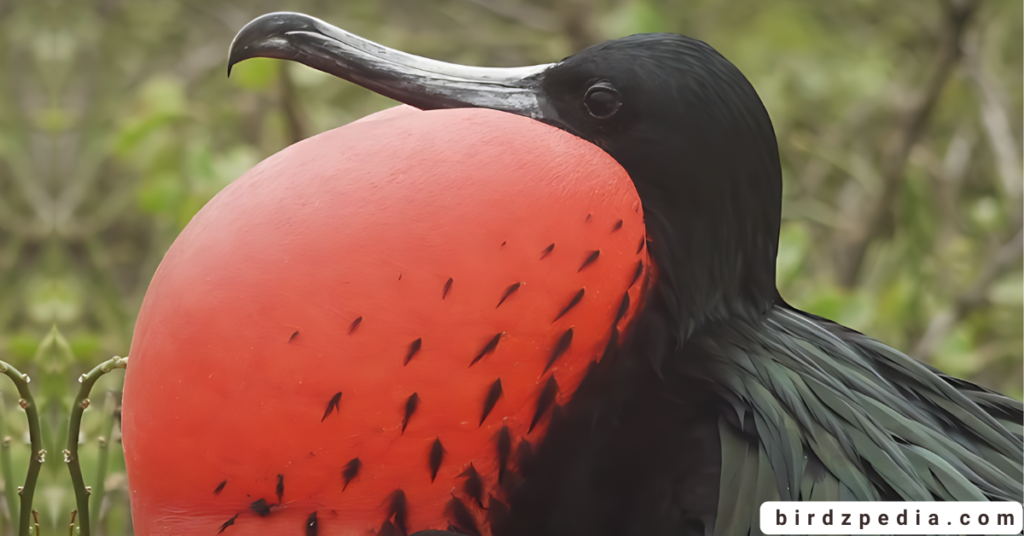
FAQs
- Where do Great Frigatebirds live?
- The Pacific, Indian, and Atlantic oceans’ tropical and subtropical zones are home to Fregata minor. They live mostly on isolated islands in the ocean.
- What is the diet of Great Frigatebirds?
- They mostly eat squid, flying fish, and other small aquatic animals. They frequently depend on other marine animals to force fish to the surface, and they are adept at collecting prey when they are in the air.
- Why are male Great Frigatebirds known for their inflated red throat pouches?
- Male inflate their brilliant red neck pouches during the breeding season as part of courtship displays to attract females.
- How long do Great Frigatebirds live?
- Although the precise lifespan is not widely known, it is thought that they live quite long lives. It has been reported that certain people can survive for several decades.
- Are Fregata minor endangered?
- Because of its vast distribution and high population, the IUCN has designated the species as Least Concern overall. Some subspecies, like F. m. nicolli in Brazil, can be regarded as critically endangered, nevertheless.
- Do Great Frigatebirds land on water?
- They are known for not alighting on the water surface. They are adapted for aerial foraging and have difficulty taking off if they accidentally land on the water.
- How do Great Frigatebirds reproduce?
- While breeding, they establish seasonal monogamous couples. Colonies build nests, and both parents help with the single egg’s incubation and the chick’s upbringing.
- What are the threats to them?
- Invasive species, habitat disruption, overfishing, pollution in the ocean, human disturbance, climate change, and possible oil spills are some of the threats.
- Why are they called “Frigatebirds”?
- The term “frigatebird” is derived from the bird’s resemblance to a frigate, a sort of quick and nimble vessel. It displays their remarkable aerial agility and flying prowess.
- Can Fregata minor swim?
- They are not suitable for swimming. They are not suited for buoyancy and takeoff from water surfaces since their plumage is not waterproof and they have lengthy wings and tails.

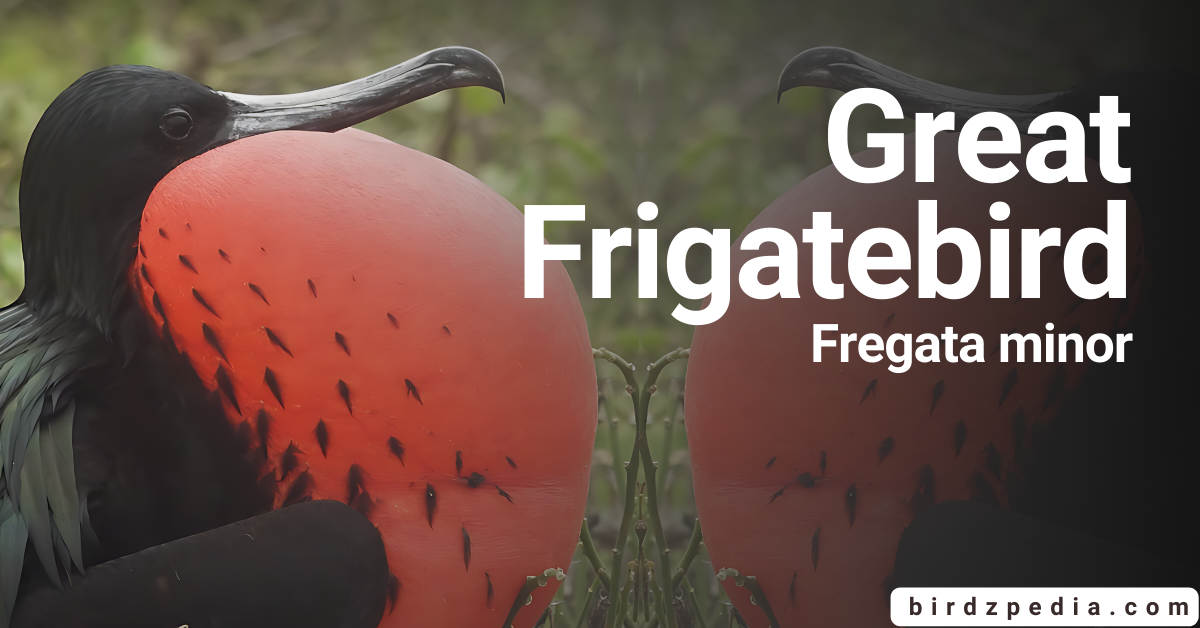
![Red-Billed Choughs[Pyrrhocorax pyrrhocorax]: Flight, Sounds, Conservation, and More](https://birdzpedia.com/wp-content/uploads/2023/12/Red-billed-cough-768x402.png)
![Great Hornbill [Buceros bicornis]: Discovering its World](https://birdzpedia.com/wp-content/uploads/2023/12/Great-Hornbill-768x402.png)
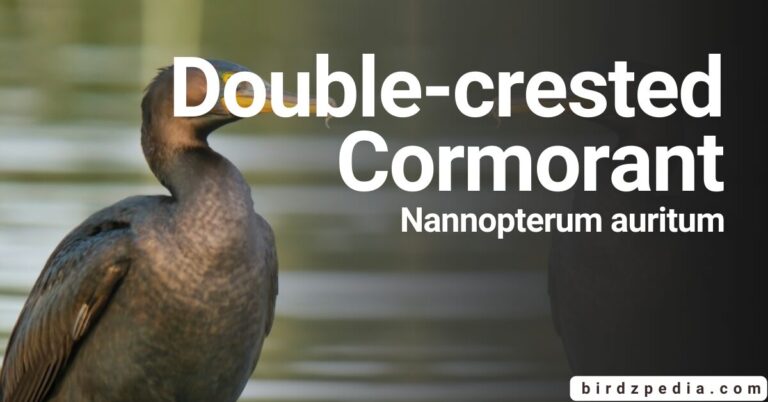
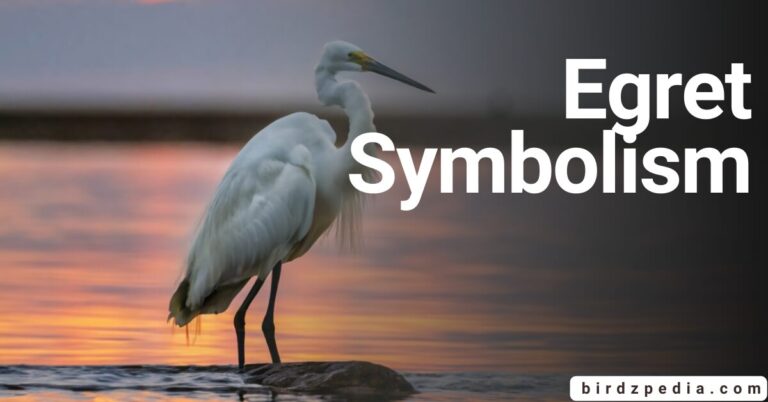
![Embracing Wildlife keel-billed Toucan:[Ramphastos sulfuratus]](https://birdzpedia.com/wp-content/uploads/2024/01/Keel-Billed-Toucan-768x402.png)
![Unique Discoveries of the Flightless Cormorant [Nannopterum Harrisi]](https://birdzpedia.com/wp-content/uploads/2024/01/Flightless-Tocuan-768x402.jpg)